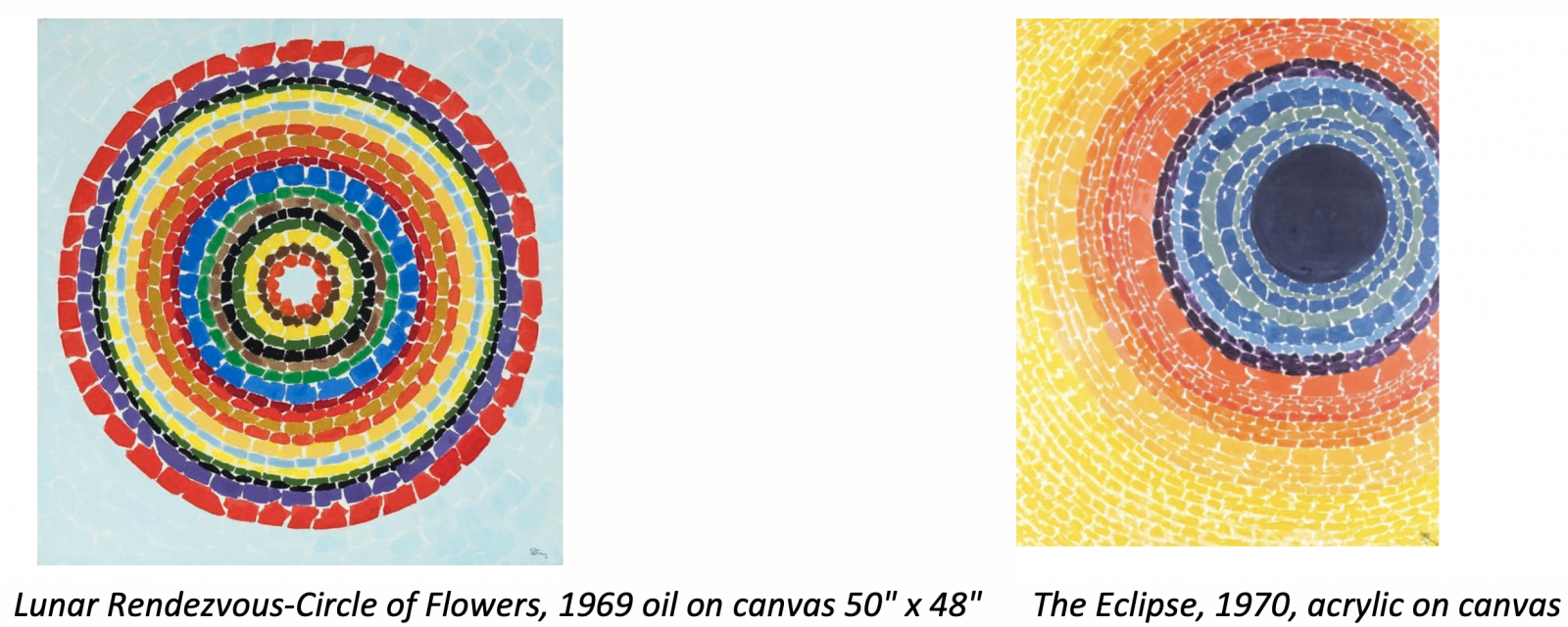Students will use repetition of shapes and color to create a design using ripped paper in the style of artist Alma Woodsey Thomas. Recommended for Kindergarten.
Color: the visible range of reflected light.

Shape: an element of visual arts; a two-dimensional (flat) area enclosed by a line and are geometric: shapes and/or forms that are based on mathematical principles, such as a square/cube, circle/sphere, triangle/cone, or pyramid or organic: shapes and/or forms that are irregular, often curving or rounded, and more informal than geometric shapes.
Pattern: the repetition of elements of art in an organized way.
Abstract: an art style that uses color, line, shape or form to create a composition which may or may not have any visual reference to the world.
Collage: a way of making artwork by gluing different objects, materials, and textures to a surface.
Craftsmanship: A way of working that includes following directions, demonstrates neatness and the proper use of tools.
Mosaic: a picture or pattern produced by arranging together small colored pieces of hard material, such as stone, tile, or glass. This lesson uses paper.
Repetition: the repeated use of particular elements of visual arts to create a pattern, movement, rhythm, or unity.
Alma Woodsey Thomas (September 22, 1891 – February 24, 1978) was an African-American Expressionist painter and art educator best known for her colorful abstract paintings. She was creative as a child. Her serious artistic career began later in life. When growing up, she made small pieces of art such as puppets, sculptures, and plates, mainly out of clay from the riverbed behind her childhood home.

Students will:
Issaquah Valley Elementary. PTA Art Docent Program Art Lesson. Written 2006 by Leslie MacInnes, Janna White et al. More information about Alma Woodsey Thomas can be found at https://en.wikipedia.org/wiki/Alma_Thomas. Drawing for Mindfulness art lesson video featuring similar Alma Woodsey Thomas project.
21st Century Thinking Skills
Thinking flexibly, persisting, creating, innovating, questioning, listening with empathy, taking responsible risks, goal setting, observing, making connections, visualizing, sequencing, predicting, comparing/contrasting, determining main idea, finding evidence, decision making, evaluating.
WA State Learning Standards
(VA:Cr1.1.K) a. Engage in exploration and imaginative play with materials.
(VA:Cr1.2.K) a. Engage collaboratively in creative art-making in response to an artistic problem.
(VA:Cr2.1.K) a. Through experimentation, build skills in various media and approaches to art-making.
(VA:Cr2.2.K) a. Identify safe and non-toxic art materials, tools, and equipment.
(VA:Cr2.3.K) a. Create art that represents natural and constructed environments.
(VA:Cr3.1.K) a. Explain the process of making art while creating. This happens if the instructor verbally describes in real time the creative process as a sequence of decisions.
(VA:Re7.2.K) a. Describe what an image represents. This happens if students give titles to their art.
Arts Integration Opportunities
Math: patterning.
Please note: These lesson plans are intended for non-profit use only. Use of these plans for commercial purposes should give attribution to the Issaquah Schools Foundation and be accompanied by a nominal donation at www.isfdn.org/donate. Thank you.
Fueling Success for Every Student, Every School